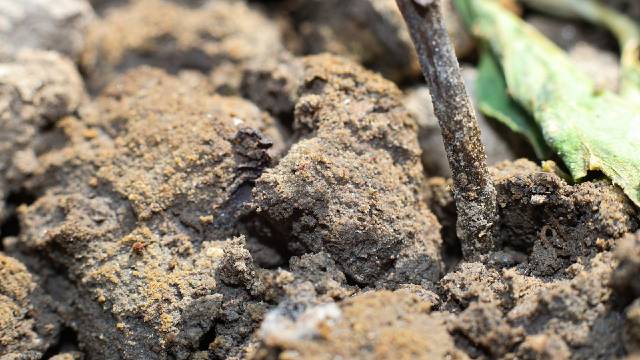Without some intervention, clay soil can be like concrete in the summer and a sticky mess during the fall and winter. But any effort to improve the texture of clay soil will reward you with vigorous plant growth because this soil is rich in nutrients.

When planting on heavy clay soils, it is recommended that you try to improve the structure of the country in a natural way, and mulching the soil surface is one of the best.
One of the materials is manure which has a large proportion of straw or composted bark. A finer composition of composted bark, leaves, garden compost or compost with mushrooms will also have a beneficial effect, but to a lesser extent.
Burying small gravel into the ground is often recommended, but the amount of gravel needed for larger areas is not really a practical solution, but is an option for smaller areas.
When planting a plant in clay soil, it is necessary to use pitchforks break the bottom and edges of the holeand pulverize the soil. Compacted soil around the hole will not allow the passage of waterwhich will cause the death of the plant.
In the spring, cover the plant with a few centimeters of mulch, but move it away from the stem of the plant by 5-6 centimeters. Constant maintenance of this mulch will improve the soil profile.
Clay soil – which plants like it?
Trees: Japanese maple, birch, hawthorn, eucalyptus, partridge, liquidambar, conifers such as Korean fir, Chilean araucaria, giant thuja.
Shrub species: barberry (evergreen and deciduous), summer lilac, quince, fuchsia, hydrangea, mahogany.
Other decorative plants: bergenia, salvia, persicaria, lady’s mantle, fairy flowers, hosta, corn, tritoma, honeysuckle.
Source: Rhs
Source: www.agromedia.rs


